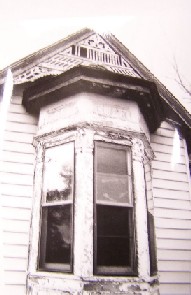
I've been using the same basic set-up for my quick, plein air oil paintings since I began this blog. I use a limited palette of about eight colors (mars black, titanium white, alizarin crimson, cadmium yellow light, cerulean blue, ultramarine blue, indian yellow, and maybe burnt umber or yellow ochre), a cradled wood panel (6"x8" up to 10" x 14"), and a fist full of round, hog-hair brushes (rounds, sizes 8-12). I give myself around 30-40 minutes to work based on the size of the panel and the light & weather conditions.
The purpose of these quick paintings is to loosen up my painting style and to get me warmed up for bigger projects. And, this formula has worked pretty well for me. Sure, about a third to half the painting don't make it, but the ones that do have been getting better and better. And, most importantly, I'm painting.
Prior to this, a lot of paintings never got finished. I'd agonize about every brush stroke, and, if the painting was starting to look good, I'd be paralyzed with the fear of ruining it. And, I fretted about wasting my precious, expensive oil paints on bad paintings. For years, I didn't manage to produce much.
I tried to limit myself to as few variables as possible with my plein air exercises. My formal education in oil painting has been pretty erratic, so I figured that would have to learn through experimentation. This gave me the chance to explore what all I could do with a particular set of materials by limiting myself to using only them. It also allowed me to focus more on the painting itself than my material.
Recently, I've become dissatisfied with my round, hog-hair brushes. There isn't anything wrong with them, it's just that I'm tired of only using them. I've been looking at a lot of other artists' works and wondering, "how did they do that?" One of the answers is that they are using different brushes than I am.
I've bought some new brushes. Not too many yet since I'm on a pretty tight budget, but I have scrounged up some filberts and square brushes with synthetic and sable bristles. I've used them on a few of my more recent paintings which may be why some of them are not turning out as well as I like. It takes me a while to get use to new things, but I think that the change has been good. It may be ugly, but progress is being made.


